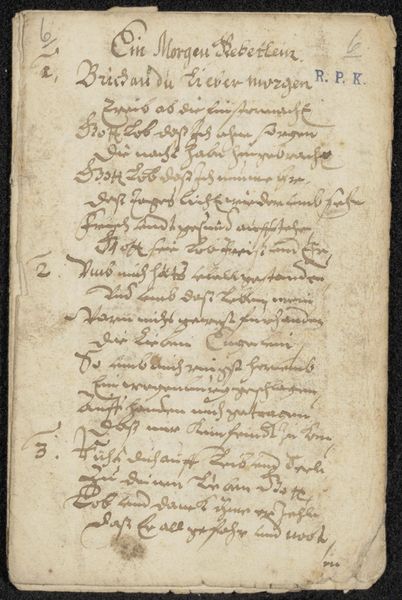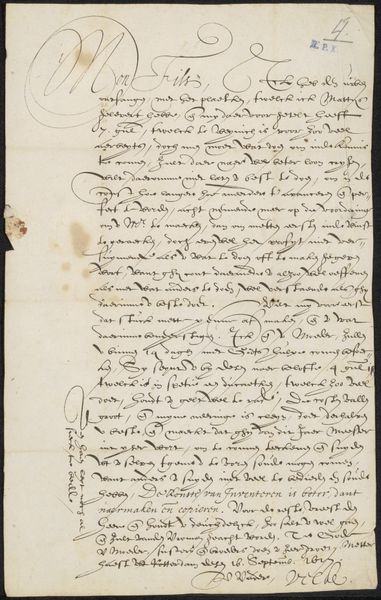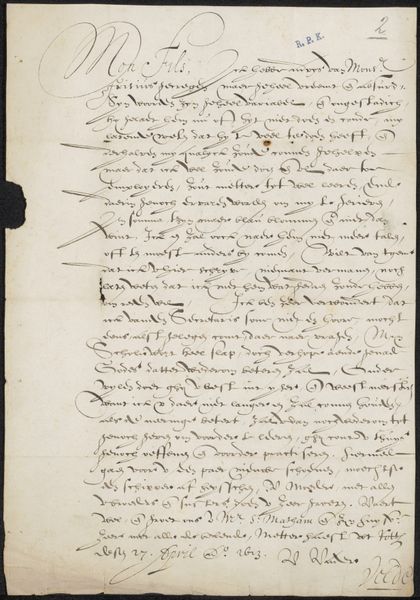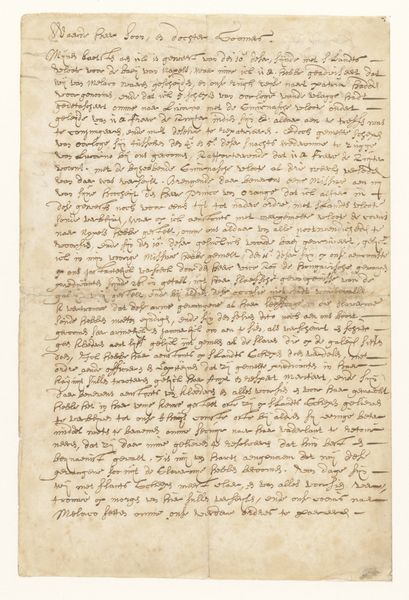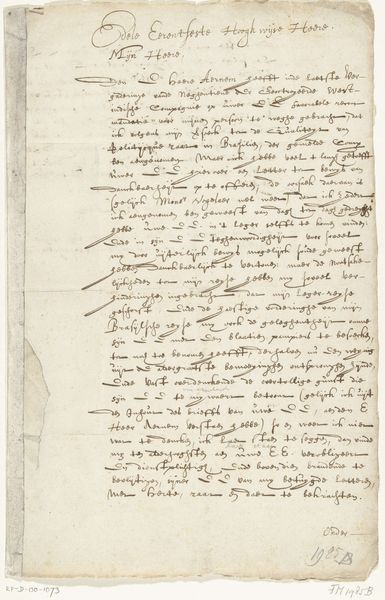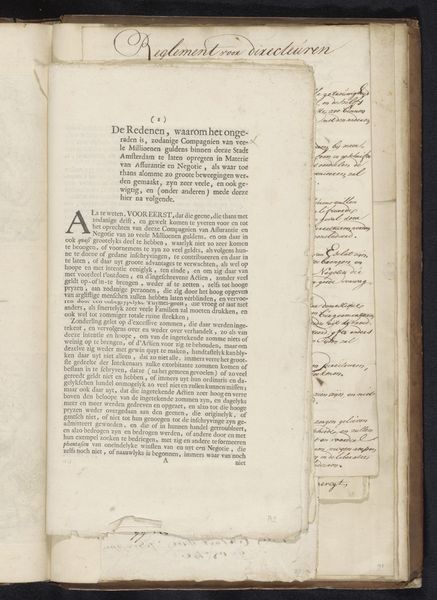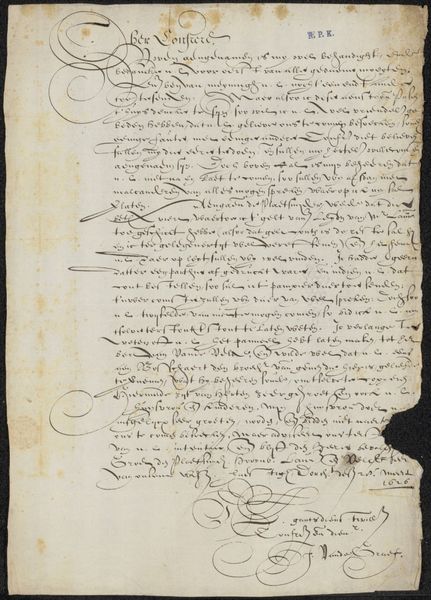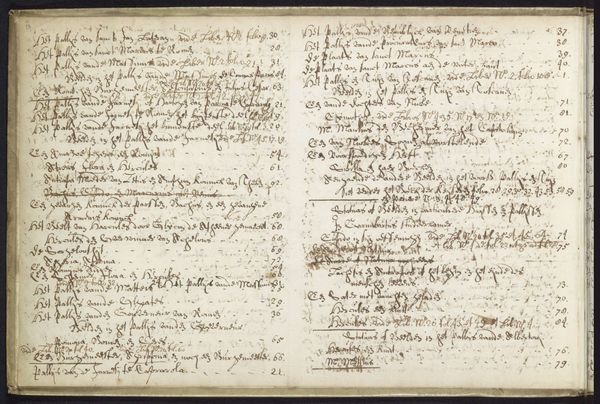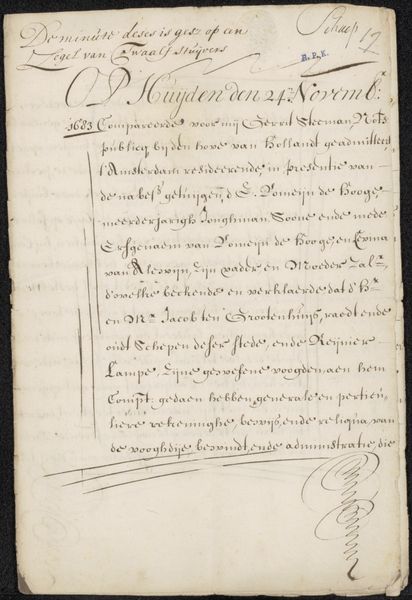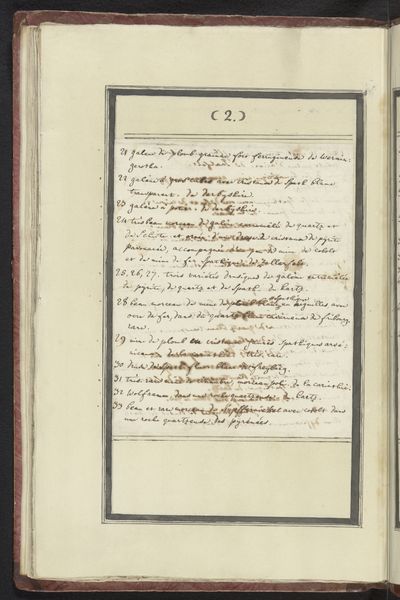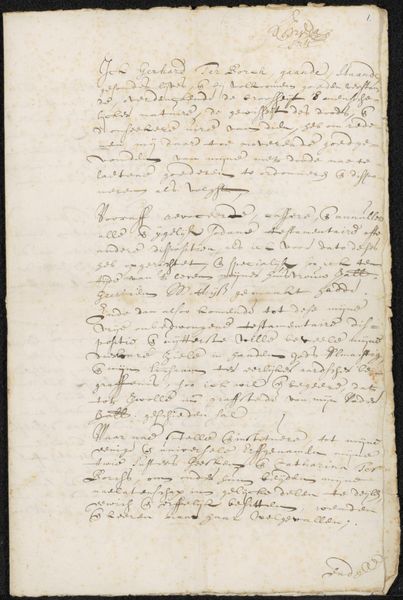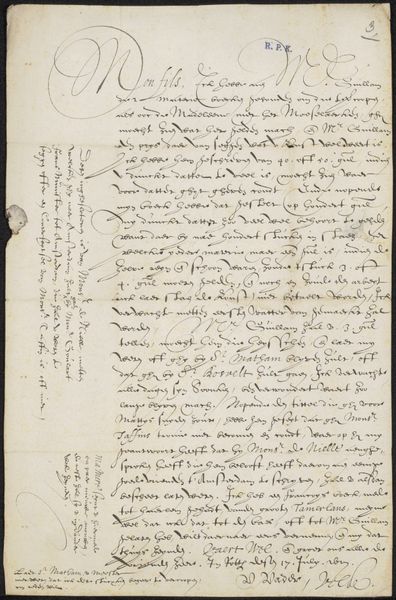
Uitleg van de scènes uit het leven van Alexander de Grote c. 1655 - 1665
0:00
0:00
#
aged paper
#
toned paper
#
tea stained
#
personal sketchbook
#
coloured pencil
#
thick font
#
golden font
#
watercolor
#
historical font
#
columned text
Dimensions: height 412 mm, width 315 mm
Copyright: Rijks Museum: Open Domain
Editor: Here we have Leonaert Bramer's "Explanation of Scenes from the Life of Alexander the Great", dating back to about 1655-1665. It’s ink and watercolor on paper. Looking at it, I am immediately struck by how it resembles a page from a handwritten book, with dense blocks of text. How would you interpret its place in art history, Curator? Curator: Well, this work highlights the public role that imagery played in shaping historical narratives. Consider the audience for whom this was intended. A wealthy patron perhaps? One interested in the visual propagation of Alexander’s life and legend? The way Bramer breaks up Alexander's history into what looks like textual panes is particularly telling; each almost acting as a script, or storyboard. Editor: That’s a fascinating point about the audience and how it shapes the piece. But do you think the format-- these organized textual boxes—could have been about controlling how viewers consumed Alexander's life? Curator: Precisely. The format allows for digestible chunks of history, curated and presented in a visually appealing way. Consider, too, the power of text itself in the 17th century. Whose history gets recorded, and how? The art becomes another way to assert control over narrative. Editor: It’s like history being performed on a page. Now I'm looking at how it sits as this kind of midpoint of theatrical script and propaganda... So much to consider. Curator: Indeed. And the very act of creating this piece – its patronage, its dissemination – reflects power structures of the time, and the role of art in solidifying historical legacies. What a perfect intersection of history and art. Editor: Definitely, my initial response seems so surface level now. I've gained a lot from your historical lens on the image and the culture that surrounds its display. Thanks.
Comments
No comments
Be the first to comment and join the conversation on the ultimate creative platform.
